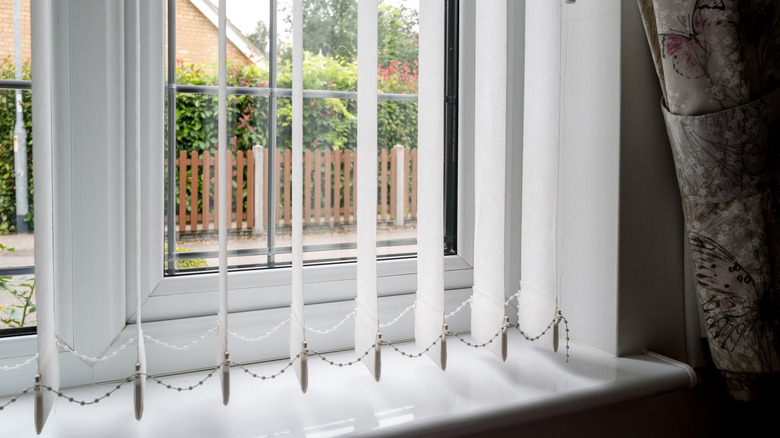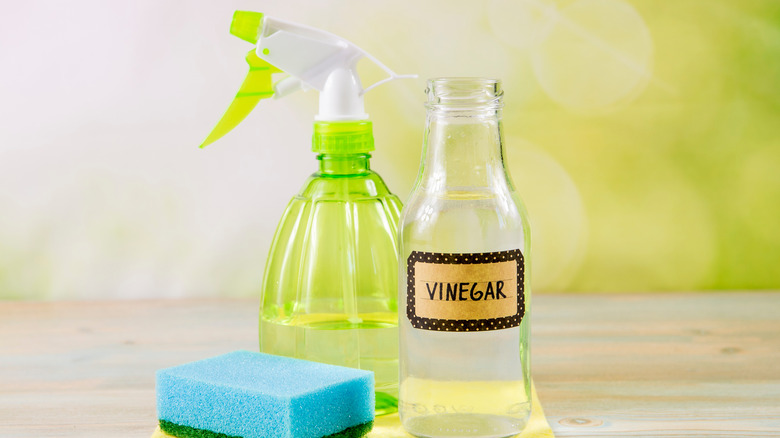Easily Remove Mold From Vertical Blinds With A Must-Have Home Essential
Opening or closing vertical blinds can unveil an unsettling sight that is oh, so wrong. No matter how you look at it, mold and mildew peppering your favorite window treatment is no laughing matter. Not only are the spots disgusting, but left untreated, fungi can cause serious health issues, especially for people or pets in your home with compromised immune systems. Fortunately, eliminating potentially toxic spores is not as costly or labor-intensive as you may think. Turns out you can easily remove mold from vertical blinds with a must-have home essential — vinegar.
If you notice mold growing on your vertical blinds don't panic. As gross as it may be, mold growth is a common problem faced by homeowners. Ironically, one of the main factors that make vertical blinds so popular is the exact impetus for fungi formation — size. Unlike Venetian blinds that are best suited for smaller, narrower windows, vertical blinds cater to wide windows and large glass patio doors, providing maximum light control and easy access to the outside. However, the trade-off for this convenience is increased exposure to condensation either from the window itself or nearby moisture-producing fixtures, such as sinks and showers. This dampness combined with poor ventilation and warmth from the sun's rays creates the perfect breeding ground for mold and mildew.
How to use vinegar to remove mold from vertical blinds
Due to its acidity, vinegar is a versatile cleaning tool capable of eliminating mold from vinyl or fabric. To spot-treat light mold growth there's no need to remove the louvers from the headrail. Instead, simply use a clean rag or the brush attachment on your vacuum to remove any dust or dirt from the area. Next, mix together equal parts warm water and distilled white vinegar in a spray bottle. Give the solution a good shake prior to spritzing on the mold stains, then allow it to sit for at least 30 minutes before rinsing with a clean damp cloth.
If mold persists after the initial cleaning, attempt the process again, however, do not dilute the vinegar. Rather apply straight vinegar to the mold spots — enough to dampen the material without completely saturating it — then allow it to sit for an hour before gently scrubbing the stains with a stiff bristle brush. Finish by wiping the slats with a damp cloth or sponge and patting them dry with a clean microfiber towel.
To deep clean blinds with moderate to heavy mold growth detach the affected louvers and place them in a bathtub filled with warm water, vinegar, and mild dishwashing soap. Allow to soak for 40 minutes before scrubbing the moldy areas with a sponge or toothbrush. Finally, rinse with clean water and hang outside on a clothesline to dry before reattaching.

